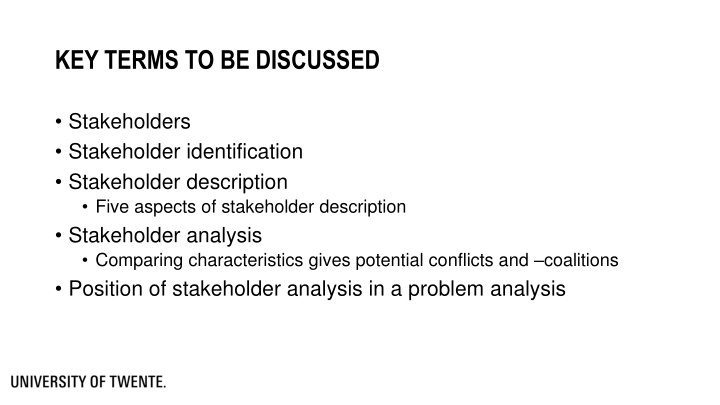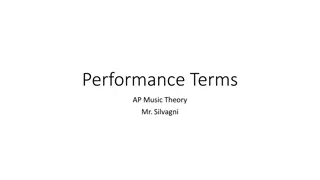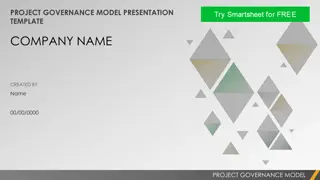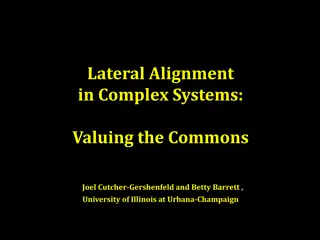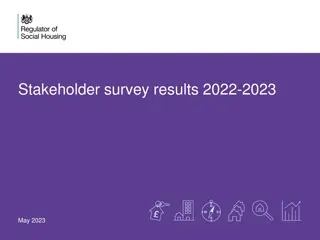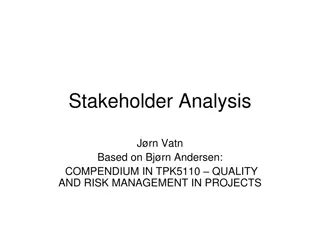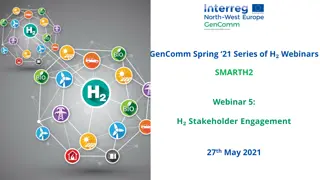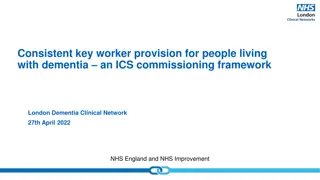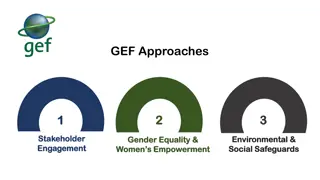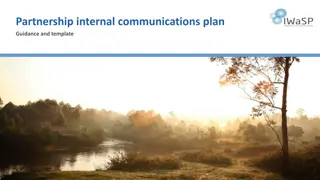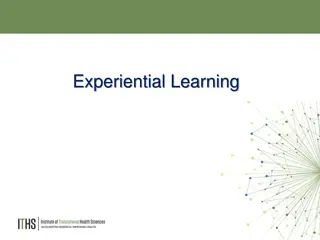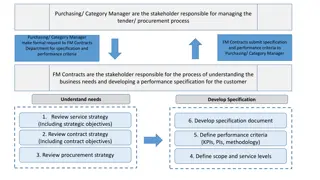Key Terms in Stakeholder Analysis
Stakes, roles, and power dynamics of stakeholders are crucial factors in problem analysis. Explore the identification, description, and analysis of stakeholders to uncover conflicts and potential collaborations. Key characteristics such as role, stakes, problems, solutions, and power sources shape stakeholder dynamics.
Download Presentation

Please find below an Image/Link to download the presentation.
The content on the website is provided AS IS for your information and personal use only. It may not be sold, licensed, or shared on other websites without obtaining consent from the author.If you encounter any issues during the download, it is possible that the publisher has removed the file from their server.
You are allowed to download the files provided on this website for personal or commercial use, subject to the condition that they are used lawfully. All files are the property of their respective owners.
The content on the website is provided AS IS for your information and personal use only. It may not be sold, licensed, or shared on other websites without obtaining consent from the author.
E N D
Presentation Transcript
KEY TERMS TO BE DISCUSSED Stakeholders Stakeholder identification Stakeholder description Five aspects of stakeholder description Stakeholder analysis Comparing characteristics gives potential conflicts and coalitions Position of stakeholder analysis in a problem analysis
STAKEHOLDER ANALYSIS: COMPARING STAKEHOLDERS IN A PROBLEM ANALYSIS
AIM Identification, description and analysis of stakeholders is part of systematic problem analysis Stakeholders: actors relevant in the context of problem-solving and decision-making
EXAMPLE Problem: a family falling apart, lot of whining at the table, people are annoyed, crying
3 QUESTIONS ABOUT STAKEHOLDERS Identification: who are the stakeholders? Description: what characteristics do stakeholders have? Analysis: what implications do differences and similarities between actors have for the problem analysis and for the suggested solutions?
FIVE CHARACTERISTICS DESCRIBING STAKEHOLDERS 1. Role; problem owner, cause of problem, solution provider, decision maker, affected by changes 2. Stakes; what do they want/fear/need in this context? 3. What do they see as the main problem? (problem variable, is, ought) 4. What do they see as possible solutions and how are all suggested solutions affecting the various stakeholders? 5. What are their sources of power in this process?
STAKEHOLDER ANALYSIS Role Stakes Problem Solutions Power A B C D
STAKEHOLDER ANALYSIS: EXAMPLE Role Stakes x Likes to read quietly Currently no time Problem Solutions Stop whining, let me read Power Veto any solution to read A x Likes to watch television Currently no time to watch Stop whining, let me watch Veto any solution B x Enjoys company of others Family is falling apart Veto any solution Leaving home Do something together C x Enjoys company of others (C) C is complaining Probably no solution Veto any solution Leaving home Drivers license D
STAKEHOLDER ANALYSIS Role Stakes Problem Solutions Power A A comparison shows potential conflicts and potential opportunities for cooperation B C D
IMPORTANCE OF KNOWING STAKEHOLDERS Preparing for conflicts: knowing potential conflicts, helps avoiding them Creating new coalitions: finding compatible but different interests, suggests new coalitions of actors Successful framing: knowing how actors perceive the problem, helps creating legitimate solutions Avoiding unsupported solutions: knowing that powerful actors agree on NOT using some (potentially effective) solution, helps avoiding to suggest unsupported solutions.
WHEN COMPARING STAKEHOLDERS Are the stakes, the problem perception, the (preferences for) solutions of the various actors Same Different but compatible Different and conflicting
POWER ANALYSIS Low interest = stakes high powerhigh low
SUBJECTS PLAYERS Low interest high CONTEXT SETTERS CROWD power low high
PLAYERS Low interest high C D CONTEXT SETTERS AB power low high
PROBLEM PERCEPTION ANALYSIS Are perceptions of the problem of actors Same; different but compatible; different and conflicting with respect to: The problem variable(s) What is the case What ought to be the case?
STAKEHOLDER ANALYSIS: EXAMPLE Role Stakes x Likes to read quietly Currently no time Problem Solutions Stop whining, let me read Power Veto any solution to read A x Likes to watch television Currently no time to watch Stop whining, let me watch Veto any solution B x Enjoys company of others Family is falling apart Veto any solution Leaving home Do something together C x Enjoys company of others (C) C is complaining Probably no solution Veto any solution Leaving home Drivers license D
STAKEHOLDER ANALYSIS: EXAMPLE Role Stakes x Likes to read quietly Currently no time Problem Solutions Stop whining, let me read Power Veto any solution to read A x Likes to watch television Currently no time to watch Stop whining, let me watch Veto any solution B x Enjoys company of others Family is falling apart Veto any solution Leaving home Do something together C x Enjoys company of others (C) C is complaining Probably no solution Veto any solution Leaving home Drivers license D
STAKEHOLDER ANALYSIS: EXAMPLE Role Stakes x Likes to read quietly Currently no time Problem Solutions Stop whining, let me read Power Veto any solution to read A x Likes to watch television Currently no time to watch Stop whining, let me watch Veto any solution B x Enjoys company of others Family is falling apart Veto any solution Leaving home Do something together C x Enjoys company of others (C) C is complaining Probably no solution Veto any solution Leaving home Drivers license D
STAKEHOLDER ANALYSIS: EXAMPLE Role Stakes x Likes to read quietly Currently no time Problem Solutions Stop whining, let me read Power Veto any solution to read A x Likes to watch television Currently no time to watch Stop whining, let me watch Veto any solution B x Enjoys company of others Family is falling apart Veto any solution Leaving home Do something together C x Enjoys company of others (C) C is complaining Probably no solution Veto any solution Leaving home Drivers license D
STAKEHOLDER ANALYSIS Role Stakes Problem Solutions Power A A comparison shows potential conflicts and potential opportunities for cooperation B C D
IMPORTANCE OF KNOWING STAKEHOLDERS Preparing for conflicts: knowing potential conflicts, helps avoiding them Creating new coalitions: finding compatible but different interests, suggests new coalitions of actors Successful framing: knowing how actors perceive the problem, helps creating legitimate solutions Avoiding unsupported solutions: knowing that powerful actors agree on NOT using some (potentially effective) solution, helps avoiding to suggest unsupported solutions.
THIS MICROLECTURE You have learned about the importance of the identification, description and analysis of stakeholders in the context of a problem analysis
